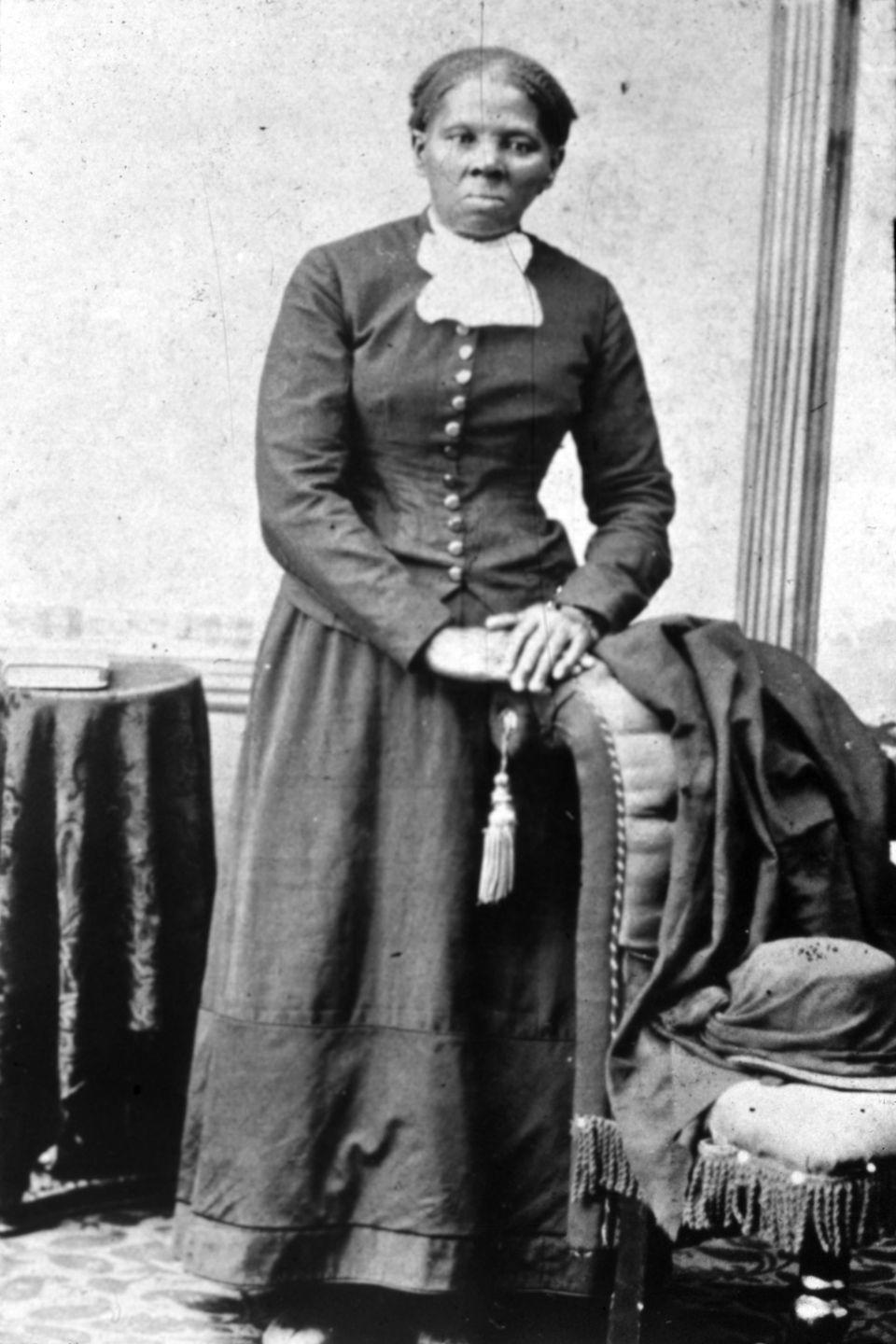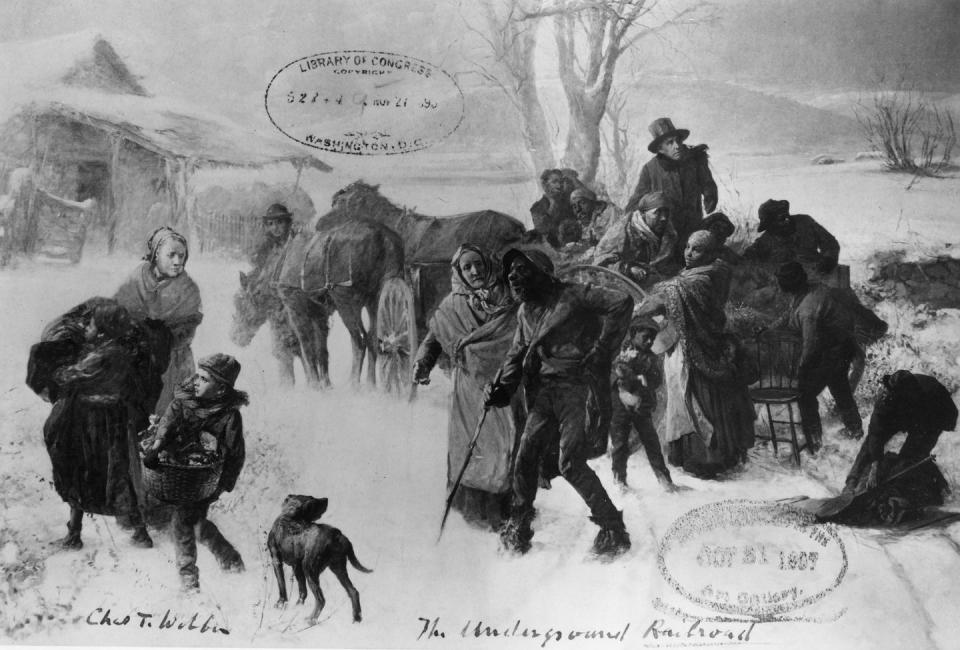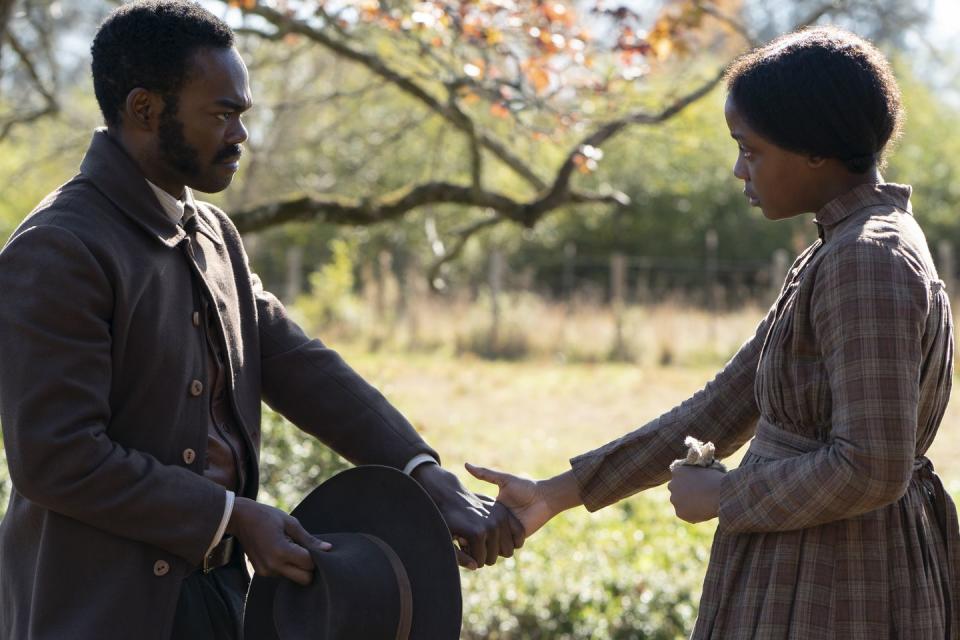The True Story of 'The Underground Railroad' is One of Courage, Triumph and Trauma

“[T]here was one of two things I had a right to, liberty or death; if I could not have one, I would have the other" – Harriet Tubman
For people in the USA, the underground railroad has almost mythical status. For most, it is a heroic act of resistance against a brutal and inhumane institution. It features in children’s books and the popular recollection of the nineteenth century. Soon, one of the most famous “pilots” on the route, Harriet Tubman, will replace slave owning genocidaire and favourite president of Donald Trump Andrew Jackson on $20 bills.
The underground railroad wasn’t actually a railroad (actual underground trains didn’t run until the middle of the Civil War in 1863) and it’s not entirely clear when that name came to be associated with the loose network of individuals, safe houses, and groups who worked to help enslaved people escape their bondage. The railroad generally helped people, up to 1,000 a year at its peak, escape from slavery and flee to northern “free states” and Canada. To undertake or help in the journey was to risk one’s life, and the fact that between thirty and one hundred thousand people escaped bondage this way is testament to the remarkable bravery and determination of both formerly enslaved people and those free people who were willing to risk their lives to give others a chance at freedom.

Most of those people are unknown to us, we know some church groups were involved and that free Black people obviously played an important role, but many participants likely took their secrets to the grave fearing retribution. No one individual ran, or even knew the route of the railroad. Unlike the version of the railroad in Colson Whitehead’s novel – which has been adapted by Moonlight director Barry Jenkins for a 10-part TV series – there are no ledger records of everyone who passed to freedom through the secret basements and backstreets of the railroad or all the people who helped them. Instead, “conductors” on the route organised in small groups and knew how to send escaped slaves one “station” further north. This structure kept the whole network from being compromised, but has also made it difficult to document and understand the full extent of the work done by abolitionists and free Black people in liberating others from the inhumane institution on which much of the US economy relied for over a century.

Generally Southern states had far higher slave populations than northern states in the Nineteenth Century. In large part, this was because their economy was entirely reliant on unpaid and unfree labor. Without slavery, the agricultural institutions of the south would not have been profitable and without those institutions large parts of the south would have been little more than a swampy backwater. Contrary to popular portrayal, the majority of slaves were held on farms of between 7 and 39 slaves, not on larger plantations. Northern states tended to find themselves in an economic situation which was less reliant on slavery, and as a result tended to have more sympathy for abolition of the slave trade within their boundaries. When the railroad began transporting its “passengers” north in the early Nineteenth Century, the idea of abolition across the territories and states controlled by the USA was extremely radical, by the time many of the “conductors” joined the union side of the Civil War, it was soon to become reality.
For obvious reasons, southern states dedicated more resources to catching escaped slaves than northern states. However even in “free states”, escaped slaves would be subject to capture and return thanks to Article 4, Section 2, Clause 3 of the United States constitution which states that no person held in labour or servitude in one state will be freed if they escape to another. This clause was the basis for the Fugitive Slave Acts of 1793 and 1850, both of which enshrined in federal law the right of slave owners to have escaped slaves captured and returned by the police as well as penalties for those who aided people in their journey to freedom. In practice, these laws not only allowed for the capture of slaves who had escaped, but also the kidnapping and enslavement of free Black people who had very limited means of proving they were free in a system that did not allow them to even speak in their own court hearings. For this reason, the railroad often delivered people all the way to British colonies in what is now Canada which had abolished the slave trade in 1833.
The journey was far from easy. Most escapees travelled in small groups on foot or by wagon. They travelled quietly at night from safe house to safe house, often taking circuitous and difficult routes to avoid detection. Because women were not often allowed to leave the plantation which made escape difficult, and children were hard to keep quiet on the journey, the bulk of the railroad’s passengers were men. Huge rewards were posted for their capture, and they would have never quite been sure who they could trust. Despite the hardship of the journey, tens of thousands of people made it to Canada. Once there they still faced overt racism and discrimination, and isolation from the family they had left behind.
Everyone in the US knows something about the underground railroad, but too much of the telling of this history is relegated to children’s books and stories which overlook the incredible bravery of the enslaved people and those who helped them to freedom as well as the complicity of the vast majority of the population and law enforcement in the enslavement of millions of people of African descent. Popular culture holds that railroad routes were coded in songs, or on quilts, but there’s little contemporary evidence to support this. The intricacies of the routes of the railroad, like many of its stories, died with the people who kept its secrets on pain of death.
One of the better documented “pilots” on the railroad is Harriet Tubman. Pilots travelled south to help enslaved people escape and travel to freedom. Tubman used the codename Moses, and had escaped slavery herself in 1949. However, once she was in Philadelphia and free, she found herself a “stranger in a strange land” and she later recounted "[M]y father, my mother, my brothers, and sisters, and friends were [in Maryland]. But I was free, and they should be free."

Over the next 11 years, guided by a faith that God spoke directly to her, she would free much of her family and dozens of other enslaved people. She travelled in the winter, when nights were longer, and the bad weather kept people who had homes in them. Tubman used disguises, aliases, and a loaded revolver to keep herself and her passengers from capture on her missions. In her owns words she never lost a passenger” in her 13 missions and 70 rescues although In at least one instance, she threatened to shoot a passenger who lost hope and wanted to turn back. Tubman led an incredible life, and went on to help John Brown recruit supporters for the raid that began the Civil War. During the conflict, she would work as an armed spy and scout for the Union. After the war, she was denied her full soldier’s pension and became an advocate for women’s suffrage until her death in 1913 aged 91.
Tubman’s story is one we know, but there are thousands of other stories of bravery, heroism, and incredible cruelty that are lost to history. For every enslaved person who escaped to freedom tens of thousands did not. Even the emancipation proclamation only freed slaves who could escape the confederacy and make it to the Union. Once the Thirteenth Amendment had been signed, Black people faced institutional racism and disenfranchisement under Jim Crow and continue to die more often than white people at the hands of the Police, who can trace their roots back to the same Fugitive Slave Acts that impelled Tubman and others to begin the long and ongoing journey to equality. The memory of the underground railroad as a way of resisting a state that was violent, racist, and seemingly all powerful is as important today as it ever has been.
Like this article? Sign up to our newsletter to get more articles like this delivered straight to your inbox
Need some positivity right now? Subscribe to Esquire now for a hit of style, fitness, culture and advice from the experts
You Might Also Like

 Yahoo Finance
Yahoo Finance 